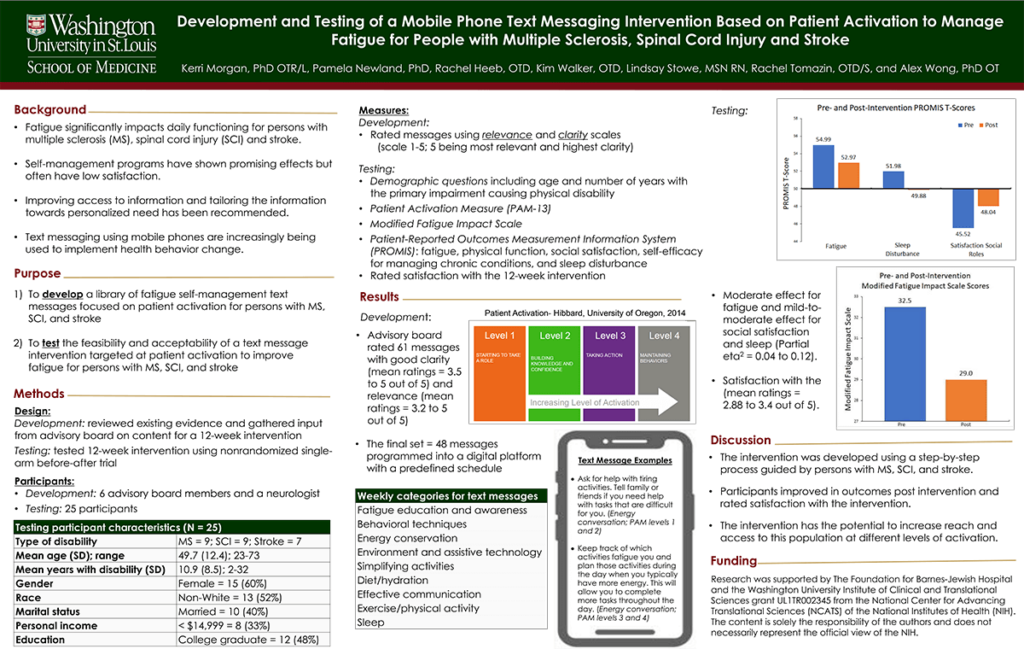Introduction: Fatigue significantly impacts daily functioning for people with disabilities (PwD). Self-management programs targeting fatigue have shown promising effects for PwD. However, current satisfaction with fatigue self-management programs is low for PwD. Tailoring a self-management intervention based on patient activation may overcome this issue. This study aimed to describe the development of a mobile phone-based fatigue self-management text message intervention targeting patient activation for persons with multiple sclerosis (MS), spinal cord injury (SCI) and stroke.
Methods: The research team collaborated with a consumer advisory board (CAB) and a neurologist to develop the intervention content and delivery process. The CAB reviewed all messages developed from evidence-based resources and provided input on the content and format. We tested the intervention over a 12-week period with messages being sent to 25 participants with MS (n=9), SCI (n=9), and stroke (n=7) based on their patient activation levels (measured by the Patient activation Measure (PAM-13)). The participants completed a pre- and post-intervention assessment with fatigue as the primary outcome. Following the intervention, participants rated their satisfaction with the intervention.
Results: Six CAB members rated 61 messages covering nine areas of fatigue self-management with good clarity (mean ratings = 3.5 to 5 out of 5) and relevance (mean ratings = 3.2 to 5 out of 5). The final set consisted of 48 messages programmed into a digital platform with a predefined schedule to deliver messages. We found moderate effects for fatigue and mild-to-moderate effects for social satisfaction and sleep (Partial eta2 = 0.04 to 0.12). Participant satisfaction with the intervention was rated high (mean ratings = 2.88 to 3.4 out of 5).
Impact: This intervention has the potential to increase the reach and access of PwD at different levels of activation. For PwD, whose access to health services are often limited, this intervention may provide an alternative delivery model to increase access to health services. A patient activation approach allows content to be delivered that matches with the person’s readiness and needs.
Organization – Washington University in St. Louis
Ali L, Patel P, Vakaki M, Kremitzki C, Waligorski J, Chadrasekaran V, Kelley K, Bachman G, Morgan K, Newland P, Heeb R, Walker K, Stowe L, Tomazin R, Wong AWK
